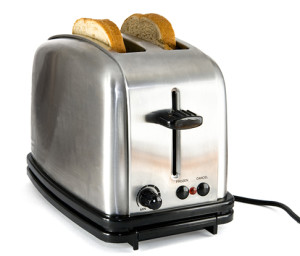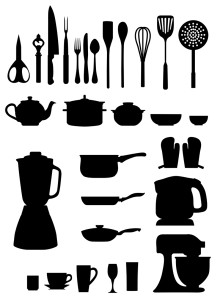Celiac Disease Diagnosis? 10 Steps You Can Take Right Now
Anyone receiving the news that he or she has celiac disease would understandably feel overwhelmed. Expert advice: Dig in and find out the facts about your diet restrictions and approach them with a positive outlook.
If you’ve just been told that you or a family member has celiac disease, or even if you suspect a gluten intolerance, it’s likely your head is spinning with information overload.
Fortunately, it’s never been easier for those with a celiac disease diagnosis to embark on a special-diet lifestyle. Follow these tried-and-true steps to be on your way to a happier and healthier gluten-free life.
1. Understand Your Disease
Make a point to learn all you can about your condition. Read recently published books written by acknowledged experts and turn to websites run by national celiac organizations, noted celiac research centers, and trusted publications. The Internet offers a wealth of material but some of it is erroneous or, at minimum, conflicting. Be sure to verify data and make certain your sources are reliable.
2. Build a Medical Team
Consult with a doctor and nutritionist who specialize in celiac disease. We’re fortunate to have a number of celiac research and treatment centers located throughout the United States. If you’re not currently receiving specialized celiac care, consider seeking out the closest celiac center. A good nutritionist can answer your questions and get you off to a good start on a gluten-free diet.
Over the years, it’s a smart idea to see an expert physician for regular check-ups and follow-up blood tests to be certain you’re not inadvertently ingesting gluten. Celiacs are typically susceptible to related medical conditions, ranging from lactose intolerance and osteoporosis to other autoimmune disorders, and an alert doctor will be able to work closely with you to lower your risks.
3. Join a Support Group
Chances are there’s a celiac disease support group within a short driving distance from where you live or work. If you don’t consider yourself the support-group type, I urge you to reconsider. These groups offer a wealth of information, food samples, tips for local restaurants, physician recommendations, recipes and, of course, friendship and emotional support.
If your child is now gluten-free, a support group dedicated to kids and their families is a must. These groups organize meetings, parties, picnics, field trips and so much more. Plus, they are an invaluable source for kid-friendly activities and restaurants in your town, not to mention summer camps and food brands.
4. Check Your Pantry

Newly diagnosed with celiac disease? Be careful with items we take for granted–toasters as well as (below) all sorts of kitchen, cooking, and pantry items.
This step includes cleaning or replacing the items in your kitchen where gluten contamination can occur: scratched pans, the toaster, your food mill, and your breadmaker, among other items. Do the homework to truly understand cross contamination, gluten-containing ingredients, and food labeling, so that your kitchen becomes a safe haven that you can rely on for tasty, uncontaminated foods.
If someone in your household plans to continue to eat gluten, take these steps:

- Organize your cabinets so that no gluten-containing foods are mistakenly used.
- Use clear plastic bins in your pantry to segregate items so there are no mix-ups when unpacking the groceries or when reaching for cereals or snacks.
- Color-code pans, utensils, and the like with fun-colored duct tape so that it’s easy to tell which are dedicated for gluten-free use.
If all of this seems too much for you to handle after your celiac disease diagnosis, encourage the gluten-eaters in your family to join your gluten-free lifestyle. It’s easier and causes fewer headaches (and stomachaches!) if you’re all in this together.
5. Stock the Basics
Use this time as an opportunity to improve your overall diet by choosing simple, nutritious, unprocessed foods. Most whole foods are naturally gluten-free. At the same time, buy some prepared items, like frozen pizzas, pasta, soups, pretzels, and other favorite snacks—whatever you enjoyed eating before going gluten-free. Having these on hand will keep you from feeling deprived and help you avoid the temptation to cheat. Try a few different brands to figure out which you like best. Then stick with them for at least six months or until you’re comfortable enough with your new diet to branch out. You’ll also want to stock some gluten-free baking mixes and a reliable all-purpose gluten-free flour blend.
6. Dust Off Your Apron
Even if you’ve never baked from scratch, consider doing it now. Despite all the new gluten-free products available, many just don’t taste like the foods you remember. That’s where you and your oven come in. Any item you enjoyed prior to your diagnosis, you’ll be able to enjoy once again, gluten free. Bread, cookies, cake, muffins, pizza—you’re limited only by your imagination. A growing number of wonderful websites and cookbooks offer excellent advice.
Again, this is where you’ll thank your support group. These new friends will give you recipes, baking tips and cookbook and website recommendations worth their weight in gold. You can start with gluten-free mixes and then ease in to your own from-scratch recipes. As you grow accustomed to this new way of cooking, expect a few culinary setbacks. But be assured that you’ll become a pro at creating some amazing treats your whole family will love. You may even discover that you have a knack for cooking.
7. Buy a Bread Maker
A good bread machine can be your new best friend. This little helper can produce a scrumptious loaf of soft, fresh bread in less time than you may expect. Unlike yeast breads containing gluten, gluten-free dough doesn’t require the laborious kneading, punch-down and double-rise cycles. Thus, in less than an hour and a half, the heavenly smell of baked bread can fill your kitchen. Imagine sandwich bread, French toast, bread pudding, stuffing–all your favorites in very little time and not much fuss.
8. Patronize Local Businesses
You’ll feel better once you figure out the dining spots in your town that serve safe foods. If there are no chain restaurants that offer gluten-free menus nearby, such as Outback Steakhouse or P.F. Chang’s China Bistro, develop a relationship with a small local eatery with an agreeable chef who’s willing to work with you. Become a repeat customer–give them every reason to want to serve you. The same holds true for your local natural food store or grocery. Ask the manager to stock safe items you’ll purchase with regularity. Encourage them to group the gluten-free foods together to make shopping easier.
9. Don’t Settle
Just because you’re now eating a gluten-free diet doesn’t mean you don’t have the right to enjoy delicious meals. Once you know it’s possible that, even with celiac disease, your food can be just as good as (if not better than!) wheat-based foods, you’ll become adamant about wanting only the best. If we all demand better, companies and restaurants will have to respond with delicious products.
10. Exhale
Relax. It’s going to be all right. Your celiac disease diagnosis is a life sentence, not a death sentence. You’ve been handed the opportunity to largely control your health by what you choose to put into your body. Without a prescription, you can heal yourself simply by taking charge and changing a few of your foods. Now don’t you feel better already?
The author of this post, Jules E. D. Shepard, is associate editor of Gluten Free & More and founder of gfJules Gluten Free Flour & Baking Mixes.
Originally published in May 2016 and updated.


 What Are Sulfites and Are They Bad for You?
What Are Sulfites and Are They Bad for You?  Sesame Allergy: The 9th Most Common Food Allergy
Sesame Allergy: The 9th Most Common Food Allergy  Lupin Allergy: Are You At Risk?
Lupin Allergy: Are You At Risk? 
Among the useful items on the "to-do" list of anyone diagnosed with celiac disease: Join a support group of people who have similar dietary issues.
© Monkey Business Images | Dreamstime.com